Withdrawal & Tolerance
Contents
Diagnostic Definition
Defines the list of disorders per disorder
General Symptoms
- Overdose
- Addiction
- Attempt to break free from use
- Craving
- Failure of public duty
- Use despite ongoing interpersonal issues
- Dismissal of social, occupational or recreational activities
- Use despite damaging effects
- Tolerance - need to take more to feel the same
- Withdrawal
Tolerance
Super-optimal Binding
- "A need to increase substance dose to achieve intoxication or desired effect"
- "A diminished effect with the same amount of the substance"
To remain healthy, neurons need to fire with a certain frequency. If they are fired too frequently/infrequently, neurotoxicity can occur.
- If the drug acts on inhibitory receptors - the cell with under-fire
- If the drug acts on excitatory receptors - the cell with over-fire
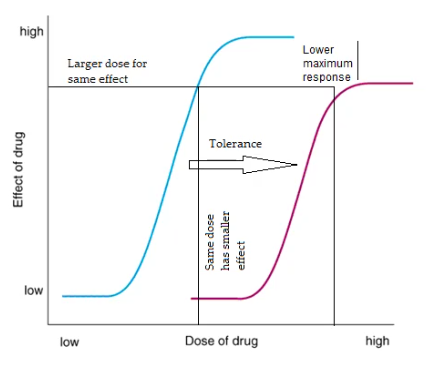
After drugs have been administered, the dose-response curve is effectively shifted to the right (more dosage required for same effect). In addition, the maximum response lowers as a result of receptor desensitisation and down regulation.
Receptor Desensitisation
To protect themselves from super-optimal receptor binding (i.e. triggered through drugs), neurons will cause receptors of the ion channels on the cell membrane to become insensitive, such that binding to the receptor has no impact on the excitation/inhibition
Down Regulation
Another method that the body performs, is to decrease the number of receptors

Conditioned Tolerance
Long trace conditioning is less effective than short delay conditioning.
Yet environmental factors can induce withdrawal symptoms.
Compensatory response hypothesis
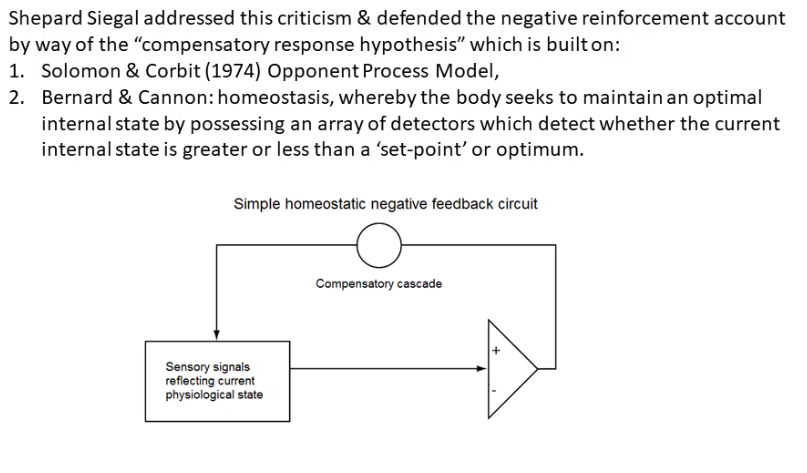
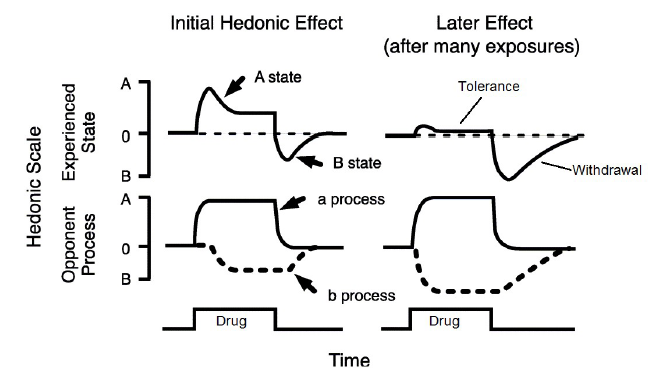
After the first uses, there is little conditioned compensatory response (B) occurring (positive > negative) however after extended use there is a greater response (negative > positive) and the effects of withdrawal are felt.
Hence, without the drug, a conditioned stimulus may induce a compensatory response - that will be experienced at large.
Tolerance to high doses can be attributed to conditioned tolerance responses.
If a drug user administers at a high dose in a different (unconditioned) environment then there may lie a risk that the body does not produce enough of a compensatory response, making the high dose akin to an overdose
Withdrawal
Supra-optimal binding
- "Having experienced the characteristic withdrawal syndrome for the substance"
- "The substance (or a related substance) is taken to relieve or avoid withdrawal symptoms"
Alcohol (Depressant) Withdrawal
Alcohol works on glutamates, GABA, dopamine and opioids to produce relaxation.
Less GABA (less inhibition) and increased glutamate (increased excitation) causes over-excitation of brain activity. It is important for alcohol reduction programs to ease the decreased usage of alcohol, rather than fully abstain (Craig et al.)

Stimulant Withdrawal
The withdrawal of stimulant drugs produce the reversed effects - loss of motivation, depression, anxiety

- Active cell count decreases during withdrawal
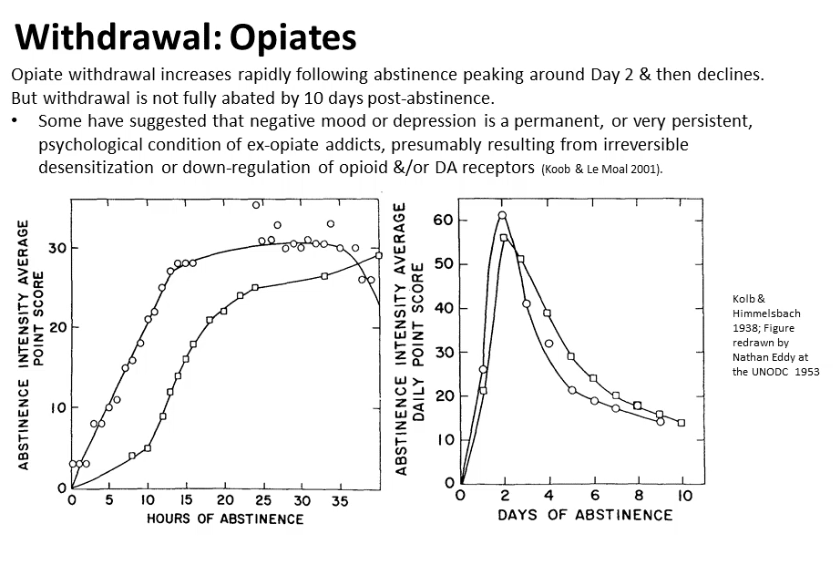
Peak: 2 days
Duration: 10 days
Cannabis Withdrawal
A study on rats (Breivogel et al. 1999) found that rats experienced receptor desensitisation and down regulation of CB1 in the cerebellum, hippocampus and striatum.
- Anger, anxiety, sleep disturbance, etc
Peak: 1 week
Symptoms last around 27 days

Curve shifted to the right (and lower max attained)
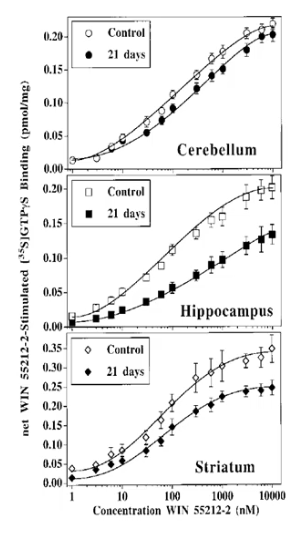
Nicotine Withdrawal
Impaired cognition, depression, anxiety

Conditioned Withdrawal
Abraham Wikler - withdrawal represents a significant barrier to abstinence that promotes relapse to drug use
- Addicts learn to perform a particular action (drug use) in order to pre-emptively avoid an expected withdrawal syndrome or terminate a current withdrawal syndrome (negative reinforcement)
- Recreational drug use maintained by the rewarding properties of the drug (positive reinforcement)
Why does withdrawal occur even after medically supervised withdrawal?
An environment (CS) may elicit a conditioned state (CR)
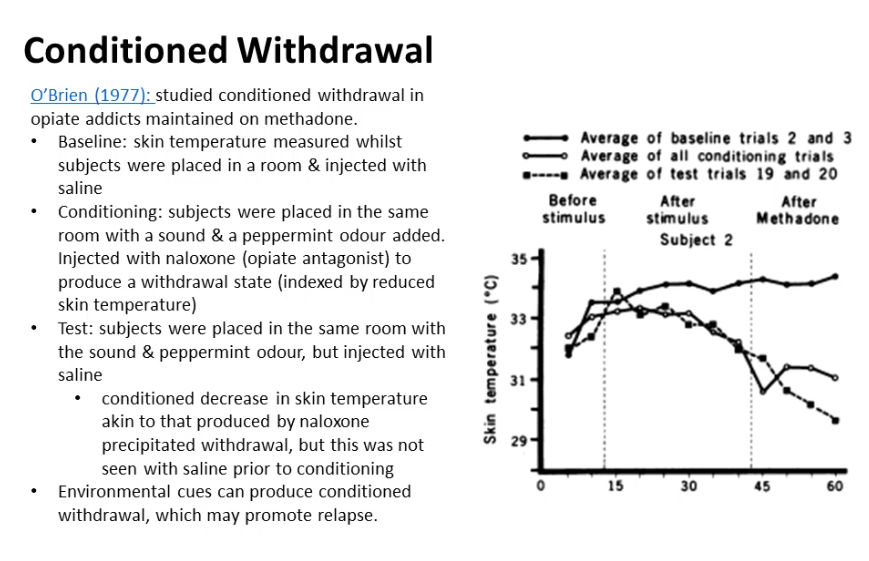
Environmental cues can produced conditioned withdrawal.
This supports the idea that conditioning can happen subconsciously.